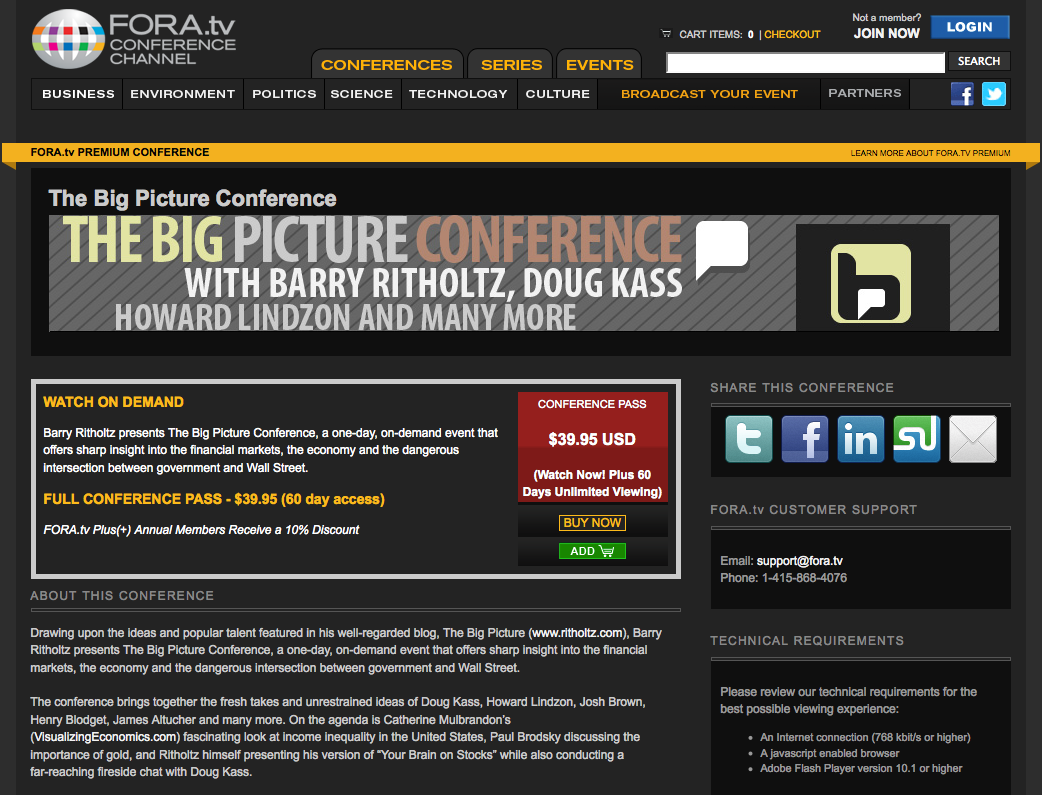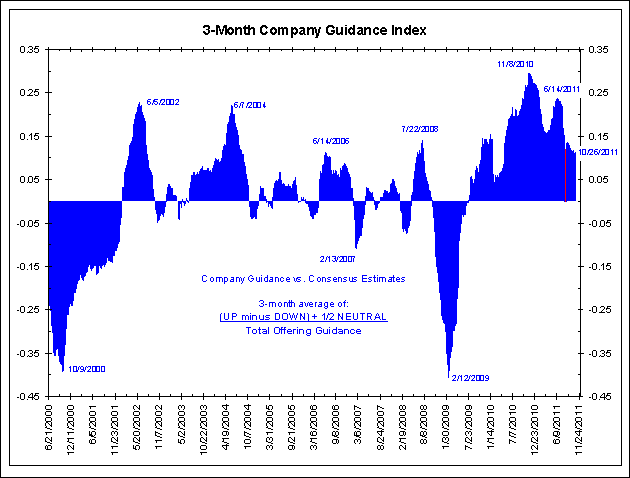The Big Picture | |
- UK: Robin Hood Tax
- Investor Types to Avoid
- The New Arms Race: Hunter Killer Drones
- The Rossi SixtySix Vette
- James Bianco: Crisis Correlations
- Now Online: Big Picture Conference
- Boring to Bold: Presentation Design Ideas for Non-Designers
- American Familys’ Money: Where Does It Go?
- Discussing Q3 GDP And The Markets
- Crash Test: 1959 Chevrolet Bel Air VS. 2009 Chevrolet Malibu
| Posted: 30 Oct 2011 12:30 PM PDT Campaign video by Richard Curtis and Bill Nighy, about the Robin Hood Tax, a tiny tax on bank transactions that could raise hundreds of billions for public services and to tackle poverty and climate change at home and around the world. Add your own voice to the campaign at http://www.robinhoodtax.org.uk |
| Posted: 30 Oct 2011 12:00 PM PDT Investor Types to Avoid ~~~ Has this ever happened to you? You’ve been waiting to deploy some fresh capital capital. You’ve done your homework — checked the charts technical-analysis, looked over the fundamentals fundamental-analysis. You are ready to make a buy. But moments before you pull the trigger, someone casually mentions something negative about this new target. It could be a coworker or some talking head on TV. Regardless, you hesitate, decide to do some more research, just to be sure… and the next thing you know, your stock pick is off to the races — without you. All you can think is, thanks for nothing, buddy. Apprenticed Investor: 6 Investor Types to Avoid We’ve all had chance encounters like this. They can cause self-doubt, make you second-guess yourself, wreak havoc with an investment strategy. There are two solutions to dealing with this kind of distraction: One is to become more confident in your own skills. This will occur as you continually educate yourself, which is what “The Apprenticed Investor” is all about. The more confidence you develop, the easier it is to stick to your investment plan and not let third parties bump you off track. The other solution is simpler: Learn to recognize destructive investor personalities — and stay as far away from them as possible. Last week, we discussed why gains and losses are ultimately the investor’s responsibility. But there are some people who can temporarily knock you off your game: These are people to avoid. • The Enthusiast: He’s always breathless; his companies are always on the verge. “Big news is due any day now.” There’s always someone about to “snap these guys up.” He’s entranced with new management, i.e., “The new CFO was employee No. 12 at Dell (DELL)!”. At one time or another, we’ve all been bitten by the infectious salesmanship of the enthusiast. The story always sounds great… yet somehow, the stocks never seem to work out. • The Tipster: The easiest of all the archetypes to recognize, this guy always has a hot story that simply cannot wait. It’s about to happen any minute — a deal to be announced or an imminent takeover. While the “enthusiast” is all excited about the company, what gets the tipster jazzed is the source of info. “This guy I know is (choose one) head trader at a hedge fund hedge-fund/runs a major wire house desk/at the FDA/on the board of directors.” [In 2004], biotech was hot and the tipster talked a lot about new drugs that were just about to get FDA approval (none worked out). [In 2005], the tipster [was] been big into government and military contracts; apparently, he gets to brunch with Donald Rumsfeld. For a person who supposedly has information that — if true, is likely illegal — the tipster’s trading record is surprisingly bad. With all of his connections and illicit info, it turns out that the tipster is little more than a rumor monger — and one who’s usually late to the party at that. • The Liar: Most industries have their fair share of B.S. artists. But there is a very special type of liar attracted to trading. You know these guys; they never seem to have a losing trade. When they discuss their executions, they consistently manage to buy at the low tick of the day. When they sell, their executions invariably are the very best possible print — and on almost every sale. Think about how often you’ve managed to get the very best print of the year — or even the day. Over the past decade, I can count on one hand the number of times I’ve top-ticked stocks on the way out: Iomega (IOM), Micromuse (acquired by IBM) and Qualcomm (QCOM). Meanwhile, I’ve had countless sells at the day’s low print. Somehow, the liar manages to accomplish a decade worth of statistically aberrant prices each day, before lunch. I never call these clowns out. Why show your hand? But I make a mental note who the liar is, and judge all future statements accordingly. You should do the same thing. • The Permabull or Permabear: Among the most dangerous and costly clowns in the circus, these guys are responsible for more destruction of wealth than any other player. You doubtless recall the permabulls from the late 1990s. Most are little more than slick salesmen. They do not do much in the way of original research, but you can imagine the inner workings of their minds, sifting through reports looking for just the right bullet points. The permabull uses all of the right buzzwords, his patter is polished, his manner impeccable. By the time he’s done with his bullish sales pitch, you’re reaching for your checkbook — and historically, big trouble. Some of the permabulls used to be on TV a lot. One in particular was a frequent TV guest, extolling the virtues of the Goldilocks economy and the ever-rising bull market at Nasdaq 5000. Then the bottom fell out, taking the Nasdaq down a mere 80%. He never changed his tune the entire way down. On the flip side are the permabears, of which there a few classic examples. They’ve been bearish for as far back as I can remember. They may have avoided the drop from Dow 11,000 to 8,000, but they’ve been waiting for that drop ever since Dow 3,000. Avoid these broken clocks like the plague. • The Exotician: The more obscure, the better: that’s the motto of this creature. Fascinated by exotic charts and little known indicators, the exotician changes methodologies as often as he changes his underwear. Flitting from style to style like a butterfly, his enthusiasm for the esoteric merely masks the lack of conviction he holds for his previous theory. Last week it was a combination Bollinger Bands and McClennan Oscillators. Before that it was Elliot Waves. This week, its MACD and Fibonnaci. Next month, it’s the Kondratiev Long Wave theorem. It’s not that these techniques don’t have value, but the exotician simply can’t seem to stick with any one long enough to test their validity. The exotician is on a futile search for the magic elixir — which, unfortunately, does not exist. • The Know-It-All: I love listening to people talk about stocks at cocktail parties. One of my favorite players is the guy who knows all the obscure details on a company: When they were formed, who sits on the board, the model numbers of new products, all sort of useless minutia. At his fingertips is an unholy checklist of data, all of which is completely irrelevant to the investment process. This is especially true with tech companies. Their products are complex and ever-changing; the networks they sell into are even more complicated. The technical attributes of their products are way beyond the comprehension of the average investor whose VCR clock has been flashing “12:00″ since 1994. Actual language overheard at a barbecue [in the summer of 2004]: “Wait till you see the new 2200 dynamic cross circuitry router — it’s going to kick Cisco’s (CSCO) ass.” Now, I’m pretty tech savvy: I hooked up my own TiVo (TIVO), and I can swap out a hard drive or add RAM by myself. But comparing the technical attributes of high-end switching equipment, and then doing a cost benefit analysis of the technical advantages of that product line (relative to the rest of the marketplace for that equipment) is far beyond my expertise. I’ll wager it’s beyond your ken also. Be wary of these characters. They remind me of the kid in grade school who couldn’t hit, throw or field, but he memorized the stats of all the players on his favorite baseball team. Folks like that often lack an appreciation for the game. It’s no different with investing. ~~~ This column was originally published on April 19, 2005. |
| The New Arms Race: Hunter Killer Drones Posted: 30 Oct 2011 11:00 AM PDT |
| Posted: 30 Oct 2011 08:00 AM PDT In light of our earlier post showing a crash test between a 1959 Chevrolet Bel Air and 2009 Chevrolet Malibu, here is an idea for a safe modern version of the classic 1960s Corvettes: The Rossi SixtySix Vette >
|
| James Bianco: Crisis Correlations Posted: 30 Oct 2011 08:00 AM PDT James Bianco: Crisis Correlations By popular request, the entire conference is now available for online viewing on Fora.tv. We have subsidized the video recording, editing and hosting, and your cost to view the entire conference online is $39.95 (versus $895 in person).
With No Debt Growth, Is a Double-Dip Recession Looming? from The Big Picture Conference on FORA.tv |
| Now Online: Big Picture Conference Posted: 30 Oct 2011 07:45 AM PDT By popular request, the entire conference is now available for online viewing on Fora.tv. We have subsidized the video recording, editing and hosting, and your cost to view the entire conference online is $39.95 (versus $895 in person). By popular request, the entire conference is now available for online viewing on Fora.tv. (I will post some previews in the Video tab over the next few days). Note to the many students who inquired about discounts: We have subsidized the video recording, editing and hosting, and your cost to view the entire conference online is $39.95 (versus $895 in person). |
| Boring to Bold: Presentation Design Ideas for Non-Designers Posted: 30 Oct 2011 07:00 AM PDT |
| American Familys’ Money: Where Does It Go? Posted: 30 Oct 2011 06:00 AM PDT |
| Discussing Q3 GDP And The Markets Posted: 30 Oct 2011 05:30 AM PDT Comment Jim Bianco was on CNBC yesterday discussing the latest GDP report, earnings and the markets. To view the interview click on the image above. To view any of our recent interviews click here. For more on Q3 GDP see the block below. On the topic of earnings, Jim highlighted the charts below. As we have pointed out many times, earnings are gamed and it has been completely normal for 70% of companies to beat expectations over the last several years. That's why we graded the earnings season a "gentleman's C." Revenues, shown in the second chart below, have disappointed to a degree not seen in over a year. Finally, the last chart shows the Guidance Index. It is still positive, meaning more companies have offered positive guidance than negative guidance, but this measure has declined to its lowest level since April 2010. Guidance is harder to game as corporations have to get analysts moving in the right direction. Guidance is the weakest of the statistics shown below. Bloomberg Businessweek – Economy in U.S. Surpasses Pre-Recession Level After 15 Quarters The value of goods and services produced in the U.S. surpassed its pre-recession level after 15 quarters, taking three times longer than the average for 10 previous recoveries since World War II. Gross domestic product expanded at a 2.5 percent annual rate in the period from July through September, the Commerce Department reported yesterday, the fastest pace in a year and up from 1.3 percent in the prior three-month period. After adjusting for inflation, GDP climbed to $13.35 trillion last quarter, topping the $13.33 trillion peak reached in the last three months of 2007."The American economy finally has accomplished the recovery and has now entered the expansion," said Neal Soss, chief economist with Credit Suisse in New York, who was an aide to former Federal Reserve Chairman Paul Volcker. "But the growth is clearly too slow to solve the most significant problems the economy faces: jobs and getting the public budgets under control." Consumers reduced savings to boost purchases and companies stepped up investment in equipment and software, even as the biggest drop in incomes in two years raises concerns about whether the spending increase will continue. The number of Americans with jobs last month, 131.3 million, was lower than the 138 million workers in December 2007, when the 18-month recession began, according to Labor Department data. The Wall Street Journal – Recession Fears Recede as Economy Grows 2.5% The labor market has been improving slowly, and the number of Americans filing new claims for jobless benefits fell again last week by 2,000 to 402,000, the Labor Department said in a report Thursday. ut budget cuts by state and local governments signal more gloom for employment as well as economic growth. State and local governments subtracted 0.16 of a percentage point from growth last quarter. The government of Maryland's Baltimore County is offering employees early retirement packages in a bid to trim 200 jobs. The move is designed to save at least $15 million a year out of a roughly $1.6 billion operating budget, a county spokesman said. The county's tax revenue is declining, and it also is dealing with substantial cuts in state and federal aid. Economic uncertainty and a dreary job market have been a drag on housing, which showed little improvement last quarter, according to the GDP report. Source: |
| Crash Test: 1959 Chevrolet Bel Air VS. 2009 Chevrolet Malibu Posted: 30 Oct 2011 04:38 AM PDT In the 50 years since US insurers organized the Insurance Institute for Highway Safety, car crashworthiness has improved. Demonstrating this was a crash test conducted on Sept. 9 between a 1959 Chevrolet Bel Air and a 2009 Chevrolet Malibu. In a real-world collision similar to this test, occupants of the new model would fare much better than in the vintage Chevy. “It was night and day, the difference in occupant protection,” says Institute president Adrian Lund. What this test shows is that automakers don’t build cars like they used to. They build them better.” |
| You are subscribed to email updates from The Big Picture To stop receiving these emails, you may unsubscribe now. | Email delivery powered by Google |
| Google Inc., 20 West Kinzie, Chicago IL USA 60610 | |







